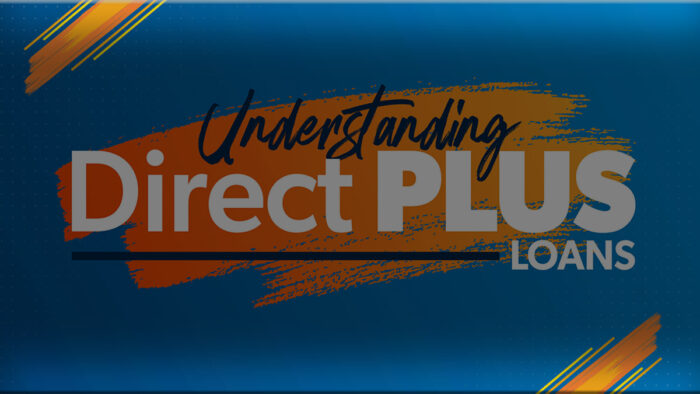In the labyrinth of higher education financing, where every decision holds the weight of a future, there exists a beacon of hope for many aspiring students and their families. It’s a lifeline that bridges the chasm between ambition and attainment, between dreams and reality. This financial tool serves as more than just a loan. It’s a gateway to opportunity, a testament to determination, and a catalyst for success. Welcome to the realm of the PLUS Loan—a vital cornerstone in the foundation of educational pursuits.

What is a PLUS Loan?
A PLUS Loan, also known as a direct PLUS Loan, is a federal loan program designed to assist parents of dependent undergraduate students in covering the costs of higher education. It offers eligible parents the opportunity to borrow funds to help pay for their child’s college or career school tuition, fees, room and board, and other related expenses.
A PLUS Loan provides a flexible financing option with competitive interest rates and repayment terms. This makes it an attractive solution for families navigating the financial landscape of higher education.
How Does a PLUS Loan Work?
A PLUS loan works by allowing eligible parents to borrow funds from the federal government to help finance their child’s education. Parents must submit a PLUS Loan application, which includes a credit check, to determine eligibility. The application process typically occurs online through the U.S. Department of Education’s website.
If approved, parents can borrow up to the total cost of attendance minus any other financial aid received by the student. This includes tuition, fees, room and board, books, and other educational expenses.
The loan amount is usually disbursed directly to the college or university to cover the student’s expenses. Any remaining funds after tuition and fees are paid may be refunded to the parent or student to use for other educational expenses.
Repayment of a PLUS loan typically begins within 60 days after the loan is fully disbursed. However, parents have the option to request a deferment while the student is enrolled at least half-time and for an additional six months after the student graduates, leaves school, or drops below half-time enrollment.
Meanwhile, PLUS loans have fixed interest rates set by the federal government. These rates are typically higher than those for direct-subsidized and unsubsidized loans. Additionally, the loan may have origination fees.
While PLUS loans do not offer the same forgiveness options as some other federal student loans, there are still options for repayment, including income-driven repayment plans and loan consolidation.
Overall, a PLUS loan provides parents with a way to help finance their child’s education. But it’s important to carefully consider the terms and responsibilities associated with borrowing before applying.
Benefits and Drawbacks of PLUS loans
Benefits
- Access to Funding: PLUS Loans provide parents with an additional option to finance their child’s education beyond scholarships, grants, and other types of financial aid.
- Flexible Coverage: Parents can use funds from PLUS Loans to cover various educational expenses. This includes tuition, fees, room and board, books, and supplies.
- No Income Limit: Unlike some other forms of financial aid, eligibility for a PLUS Loan is not based on income. This allows higher-income families to qualify.
- Fixed Interest Rates: PLUS Loans typically offer fixed interest rates, providing predictability in repayment amounts over time.
- Deferment Options: Parents can defer repayment while their child is enrolled at least half-time in school, providing financial flexibility during periods of study.
Drawbacks
- Credit Check Requirement: PLUS Loans require a credit check. An adverse credit history may result in denial or higher interest rates.
- Higher Interest Rates: PLUS Loans often have higher interest rates compared to other federal student loans. This could potentially increase the overall cost of borrowing.
- Origination Fees: PLUS Loans may have origination fees, reducing the amount of funds available for educational expenses.
- Parental Responsibility: Since PLUS Loans are taken out by parents, they bear full responsibility for repayment, potentially impacting their financial situation.
- Limited Repayment Options: While some repayment plans are available, PLUS loans do not offer the same flexibility or forgiveness options as other federal student loans.
- Impact on Credit: Defaulting on a PLUS Loan can have negative consequences for the parent’s credit score and financial future.
- Potential Overborrowing: Without careful planning, parents may borrow more than necessary, leading to an excessive debt burden for both themselves and their child.
Understanding both the benefits and drawbacks of PLUS loans is crucial for parents considering this financing option for their child’s education.
PLUS Loan Limits
The cost of attendance (COA) at the student’s school determines the maximum loan amount that a parent can borrow through a Parent PLUS Loan, subtracting any other financial aid received by the student. However, there is no set annual or aggregate borrowing limit for PLUS loans.
The student’s school determines the COA, which includes tuition and fees, room and board, books and supplies, transportation, and other miscellaneous expenses.
The parent borrower can borrow up to the full COA, minus any other financial aid the student receives. This includes scholarships, grants, work-study, and other forms of assistance.
The resulting amount is the maximum loan that can be borrowed through a PLUS Loan for that academic year. If the student’s financial aid package changes, the maximum loan amount may be adjusted accordingly.
It’s important for parents to carefully consider the total cost of attendance and any other financial aid available to the student before deciding on the amount to borrow through a PLUS loan. Borrowing only what is necessary can help minimize debt burdens in the long run.
Eligibility Criteria for a PLUS Loan
You must meet the following requirements before you can apply for a PLUS loan:
- Parental Status: To qualify for a Parent PLUS Loan, the borrower must be the biological or adoptive parent of a dependent undergraduate student enrolled at least half-time in an eligible program at an accredited institution.
- S. Citizenship or Eligible Noncitizen Status: The parent borrower must be either a U.S. citizen or an eligible noncitizen to be eligible for a PLUS Loan.
- No Adverse Credit History: The parent borrower must not have an adverse credit history. This includes having any current delinquencies of 90 days or more on any debt. Or having certain derogatory events such as bankruptcy discharge, foreclosure, repossession, tax lien, wage garnishment, or default determination within the past five years.
- Satisfactory Academic Progress of the Student: The student for whom the parent is borrowing a PLUS Loan must be making satisfactory academic progress as defined by the school’s standards.
- Submission of the Free Application for Federal Student Aid (FAFSA): The student and parent must have completed and submitted the FAFSA to determine eligibility for federal student aid, including the PLUS Loan.
- Certification by the School: The school the student is attending must certify the loan amount requested by the parent borrower based on the student’s cost of attendance and other financial aid received.
- Agreement to Repay: The parent borrower must agree to repay the loan according to the terms and conditions outlined by the U.S. Department of Education.
Meeting these eligibility criteria is essential for parents seeking to obtain a PLUS loan to help finance their child’s education.
How to Apply for a PLUS Loan
Follow the guidelines below to apply for a PLUS loan;
• Complete the Free Application for Federal Student Aid (FAFSA)
Before applying for a Parent PLUS Loan, the student and parent must complete the FAFSA form. The FAFSA determines eligibility for federal student aid, including grants, scholarships, and loans.
• Visit the StudentAid.gov Website
Go to the official U.S. Department of Education’s website, StudentAid.gov, to access the online application for the PLUS Loan.
• Log in with FSA ID
The parent borrower will need to log in to the StudentAid.gov website using their own FSA ID. If the parent does not have an FSA ID, they can create one on the website.
• Select “Apply for a PLUS Loan”
Navigate to the “Apply for a PLUS Loan” section on the StudentAid.gov website and select the option for “Parent Borrowers.”
• Complete the Application
Fill out the PLUS Loan application form with the required information. This includes your personal details, financial information, and the requested loan amount.
• Authorize a Credit Check
As part of the application process, the parent borrower must authorize a credit check. This is to determine eligibility for the PLUS Loan. If the parent has an adverse credit history, they may still be able to receive the loan by obtaining an endorser or appealing the credit decision.
• Review and Sign the Master Promissory Note (MPN):
After completing the application, the parent borrower must review and sign a Master Promissory Note (MPN). This is a legal document outlining the terms and conditions of the loan.
• Await Loan Decision
After completing the application and credit check, the U.S. Department of Education will notify the parent borrower of the loan decision.
• School Certification
If approved, the school the student is attending will certify the loan amount requested by the parent borrower based on the student’s cost of attendance and other financial aid received.
• Disbursement of Funds
After the loan is certified by the school, the funds will be disbursed directly to the school to cover the student’s educational expenses.
By following these steps, parents can successfully apply for a PLUS loan to help finance their child’s education.

